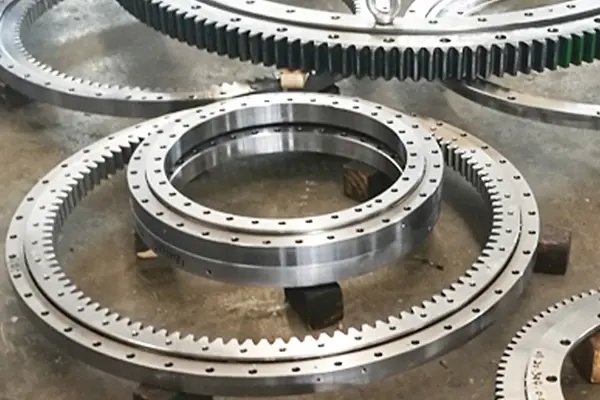
What is the HS Code for Slewing Ring Bearings?
2024-11-01
Slewing ring bearings, also known as slew rings or turntable bearings, are critical components in a variety of machinery and equipment. They allow for smooth rotational movement and are commonly used in applications such as cranes, excavators, wind turbines, and medical equipment. Understanding the Harmonized System (HS) code for slewing ring bearings is essential for international trade, as it determines how these products are categorized, taxed, and regulated. This article delves into the specifics of HS codes, the relevant code for slewing ring bearings, and the implications for manufacturers and importers.
Understanding HS Codes
The Harmonized System (HS) is an international nomenclature for the classification of goods. Developed and maintained by the World Customs Organization (WCO), it provides a standardized framework for categorizing products to facilitate international trade. HS codes are numerical codes that can range from six to ten digits, depending on the level of detail required by individual countries.
The first six digits of an HS code are internationally recognized, while the subsequent digits may vary by country, providing further specificity. For example, a product may be classified as a certain type of bearing under the first six digits, with additional digits specifying the size, material, or intended use.
The HS Code for Slewing Ring Bearings
Slewing ring bearings generally fall under the broader category of “bearings” within the HS coding system. The relevant HS code for slewing ring bearings is typically classified under:
- 8487.10: This code covers “ball or roller bearings” and is often used to specify slewing rings.
It’s important to note that while this is a common classification, the exact HS code may vary based on the specifics of the slewing ring bearing being imported or exported, including factors such as size, material, and design.

Importance of Accurate Classification
Accurate classification of slewing ring bearings is crucial for several reasons:
- Customs Duties and Tariffs: Different HS codes can result in varying customs duties and tariffs. Misclassification can lead to higher costs or penalties, affecting the overall profitability of international transactions.
- Regulatory Compliance: Proper classification ensures compliance with national and international regulations. Incorrectly classified goods may face delays at customs or additional scrutiny from regulatory bodies.
- Market Access: Certain markets may have restrictions or regulations concerning specific types of bearings. Understanding the HS code can help manufacturers and importers navigate these requirements effectively.
- Statistical Analysis: Governments and organizations use HS codes to collect data on international trade. Accurate classification allows for better market analysis and helps in understanding global trade trends.
Challenges in Classification
Classifying slewing ring bearings under the appropriate HS code can sometimes be challenging due to variations in design and intended application. For instance, some slewing rings may incorporate additional features, such as integrated motors or sensors, which could lead to different classifications. Moreover, variations in size and materials can complicate the classification process.
Manufacturers and importers should consult with customs experts or use classification services to ensure their products are categorized correctly. Engaging with trade organizations and utilizing government resources can also guide proper classification.
Conclusion
Slewing ring bearings play a vital role in various industries, providing essential functionality for machinery that requires rotational movement. Understanding the HS code for these bearings, primarily classified under 8487.10, is crucial for manufacturers and importers involved in international trade. Accurate classification not only ensures compliance with customs regulations but also helps in navigating tariffs and enhancing market access.
By recognizing the importance of proper HS code classification, businesses can better manage their trade operations and minimize potential complications. As the global market continues to evolve, staying informed about changes in the HS coding system and trade regulations will be essential for those involved in the manufacturing and distribution of slewing ring bearings.





